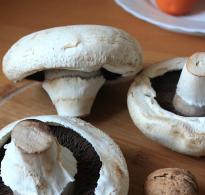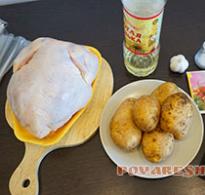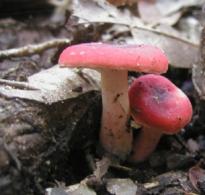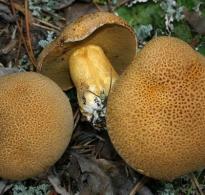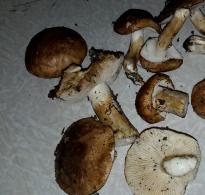White grebe. You should wait until the ambulance arrives. How to distinguish toadstool from other mushrooms
Death cap a representative of the fly agaric genus, and is considered the most dangerous poisonous mushroom. This mushroom is endowed unique property While the mushroom is young, it is as if covered with a kind of blanket, which breaks as the mushroom grows. Then the base of the mushroom stem is surrounded by the lower part of the torn blanket, which is very reminiscent of a cover, and on the cap of the blanket there remain single patchwork patches, which sometimes are not even visible on some mushrooms.
The mushroom cap reaches a diameter of 4 to 15 cm. The shape changes from hemispherical to flat. The edge of the cap is smooth, not ribbed (ribbed can only be found in old mushrooms and is endowed with a fibrous surface. The color of the cap is found in a wide palette: olive, greenish, grayish, olive-green, yellow-green, olive-brown, very rarely white, green with dark radial fibers. The lower surface of the cap is covered with frequent wide plates white, which are not attached to the leg. Young mushrooms are characterized by covering the plates with a white film, which on the stem looks like a white, sagging wide ring.
The flesh of the mushroom is elastic, fleshy, thin. Its color is white; even if damaged, the flesh does not change color. It has a mild taste and smell; in young mushrooms it is pleasant, but in old mushrooms it is sweetish, but not pleasant.
The leg grows up to 15 cm in height, and reaches up to 2.5 cm in diameter. It has a cylindrical shape, but slightly thickens towards the base, and is equipped with a thin fringed ring. The leg is white, often covered with a moiré pattern; there is also a leg or yellowish-greenish color, with a patterned pattern of a pale greenish color.
The color of the spore powder is white, their size is 7 microns, and their shape is almost round.
Below we will look at how poisonous the toadstool is, but here I would like to note that its spores are no less dangerous. Since the wind can carry them to nearby plants. Therefore, it is better not to eat plants, berries, and herbs grown in the vicinity of the toadstool. It is known that the poison found in the toadstool is not destroyed by any heat treatment. Therefore, the main way to prevent poisoning by this mushroom is the ability to correctly distinguish it. Young toadstools have a bell-shaped cap, while older mushrooms have a flat cap.
This mushroom chooses mixed, deciduous and coniferous forests, edges, and clearings as its habitat. You can often find both single-growing species and groups. The fungus is widespread in the temperate zone of Asia, Europe and North America. The season is considered to be late July until late autumn.
We mentioned that the pallid grebe is very dangerous mushroom, let's look at what this danger is.
The main danger of the mushroom lies in the fact that the poisoned person does not recognize and feel it immediately. Sometimes symptoms of poisoning begin to appear after 6 or more hours, but irreversible processes are already occurring in the human body. Sometimes, when a symptom of poisoning is identified, treatment becomes belated and pointless, which leads to death. Even despite the improvement in the condition on the third day after poisoning, the body is still destroying the kidneys and liver. And death can occur within 10 days after poisoning. Mortality from poisoning toadstool is about 50 percent.
Signs of poisoning include the following: from 6 hours to 48 hours, severe diarrhea and constant vomiting, acute abdominal pain, hemoglobinuria (red urine) are possible. Then all this is replaced by fatigue, cramps in the calf muscles, intense thirst, and very little urine content. The port seems to be getting better, but this is a false state. Then the human body is affected by hemolytic jaundice, and then on day five to six, due to failure of the kidneys and liver, the person dies. Children are very sensitive to poisoning; in them, as a rule, poisoning results in cramps and tightening of the jaws. In children, the mortality rate from toadstool poisoning is 90%. A natural question arises: what kind of substance is contained in the toadstool that gives such sad consequences. This component is called amanito-toxin, it does not dissolve in water at all, and is not affected by boiling for 20 minutes or by enzymes of the gastrointestinal tract. This poison acts on the spleen, liver, blood vessels, central nervous system and digestive tract. It is enough for a person to eat a lot small piece mushroom: be it the cap, the stem or the skin, no matter in what form (fresh, boiled, fried, etc.) - this can be fatal. One hundred grams of fresh or five grams of dry toadstool contains 20 mg of toxic substances. Its only useful property is that in homeopathy it is used as remedy, but the doses of the mushroom are very small. Lethal dose poison for the human body is 0.1 mg per 1 kg of human body weight.
Therefore, when going mushroom hunting, you need to study very carefully what you are going to pick and what you are putting in the basket. Inexperienced mushroom pickers often find pale toadstool in their baskets, which they confused and took instead of an edible mushroom. It is very often confused with different types champignon, greenish or green russula, with floats. Therefore, it should be remembered that champignon plates always change color with age; Russula is distinguished by the fragility of its pulp; the floats are very small in size and the flesh is thinner and the rings do not have a ring.
I distinguish several varieties of pale toadstool:
Green grebe, is also very poisonous, the color of the cap varies from yellow to olive green. The place chosen for growth is oak and beech forests, less often coniferous ones. Not found in the mountains and Northern Europe. The spores are white. There is a frill on the leg and the lower part of the leg is thickened. Season July-September.
Conical or pointed grebe very similar in structure to green. But you can find it much less often and more often in coniferous forests in foothill or mountainous areas.
Very important! Green and pointed-crested or canonical grebes are the most dangerous species in all stages of development; they account for more than 90% of fatal poisonings.
White grebe. It has a cap up to 12 cm in diameter, a bell-shaped shape, then becomes flat-convex, with a tubercle in the middle. The color is white, in old mushrooms it is slightly yellowish. The flesh is also white, with unpleasant smell, not bitter. The cap has loose white plates. The length of the leg reaches 8 cm, in diameter up to 1.5 cm. It is usually smooth, rarely curved at the base and thickened. The stem is covered with scales; the cap has a white sagging ring on the stem. The color of the spore powder is white. Young toadstool mushrooms in a common blanket are very similar to a chicken egg.
Green-leaved brimstone is a sulfur-yellow honey fungus that can be found on stumps, dead wood, and tree roots. The cap has a flat-convex shape, reaches 6 cm in diameter, is watery, and yellowish in color. The pulp has the same color as the cap, thin, bitter, the smell is reminiscent of fresh wood. The plates attached to the stem are narrow and dense, sulfur-yellow in color. The color of the spore powder is chocolate brown.
And one more time for last. The main signs of what is in front of you poisonous mushroom or in particular the pale grebe.
Hat young toadstool in a bell-shaped form, then it straightens until it becomes flat-convex. The diameter of the cap can grow up to eleven centimeters. The color of the toadstool can be white, yellowish, greenish or even olive. Sometimes in the center of the cap there is a spot slightly darker than the main color of the cap.
It should be remembered that none Living being does not eat pale grebe. Therefore, if a large mushroom is found without traces of a taste test, and it is impossible to say exactly what it is called, you should really think about whether to pick it or not.
Old toadstool mushrooms can attract either an unpleasant or a sweet smell.
You can find the toadstool almost everywhere, but for the most part it is found in the middle zone.
If it does end up in your cart death cap, then the surest thing would be to throw out both the toadstool and all the mushrooms that were lying nearby.
Due to its content of phalloidin, amanitin, and phalloin, the pale grebe is very dangerous; it is enough for an adult to consume 30 grams. fresh mushroom how a person can face very serious food poisoning, possibly even fatal.
We must also remember that even fungal spores can cause poisoning. And signs that a person has been poisoned may not appear immediately, but after 8 hours.
The most important rule is, if you are in doubt, whether a mushroom is edible or inedible, do not take it at all.
Did you like it! Then click on the button
Among food poisoning In terms of severity, one of the first places is occupied by mushroom poisoning, especially toadstool. Along with botulism, this is the most dangerous disease, since the probability of death reaches 90% of cases.
There are many poisonous mushrooms, but the pale grebe is the most insidious and terrible representative of this group. Therefore, let's look at why it is so dangerous, what the symptoms of poisoning with toadstool will be and how to help the victim.
How to distinguish toadstool from other mushrooms
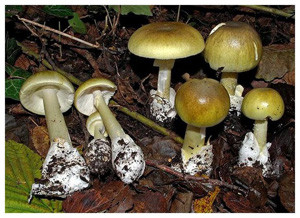 The pale grebe has a characteristic belt (ring) on its leg and it has a volva - a membranous pouch at the base of the leg, 3–5 centimeters wide. The cap plates are always white, which distinguishes the pale toadstool from the champignon. When broken, the pulp does not change color; its smell and taste are weakly expressed.
The pale grebe has a characteristic belt (ring) on its leg and it has a volva - a membranous pouch at the base of the leg, 3–5 centimeters wide. The cap plates are always white, which distinguishes the pale toadstool from the champignon. When broken, the pulp does not change color; its smell and taste are weakly expressed.
What is the difference between the pale toadstool and mushrooms that look similar to it?
- Russulas and greenfinches do not have a ring and a volva;
- champignons do not have a volva, and with age the cap plates turn brownish;
- The float does not have a ring on the leg and is small in size.
Important! You cannot cut the mushroom under the cap - this way you may miss the membranous ring and volva, characteristic of the toadstool. Poisonous mushrooms are often confused with edible ones precisely because unidentified pieces get into the general mass.
Seasonality is observed in poisonings. They occur starting in mid-summer and ending in October. The peak of the disease occurs in August.
Poison of the toadstool and its effect on the human body
For practical purposes, there are two groups of toxins that are present in toadstool:
- phalloidins;
- and alpha-amanitins.
Phalloidins are less toxic, but act quickly and are not destroyed by heat treatment. Amanitins are more poisonous, but act a little slower. All of them are not digested in the intestines and enter unchanged into the liver, which takes the brunt of the impact.
Poisons cause severe gastroenteritis, destroy the internal structure of liver cells and its fatty degeneration, disrupt the integrity of the intestinal capillaries and all internal organs. They cause a strong decrease in blood glucose levels, disrupt general metabolism and generally affect the central nervous system.
Symptoms of toadstool poisoning
 In clinical practice, several periods of the course of the disease are distinguished in case of poisoning with toadstool. Symptoms depend on the severity of the process and the amount of poison received.
In clinical practice, several periods of the course of the disease are distinguished in case of poisoning with toadstool. Symptoms depend on the severity of the process and the amount of poison received.
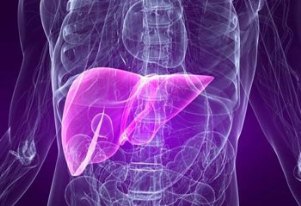
 Death from toadstool poisoning usually occurs within 10 days. The condition of the heart and blood vessels plays a major role in this issue. In case of a favorable outcome, with a mild degree of poisoning, recovery occurs quite quickly. A longer rehabilitation period is required for moderate and severe poisoning - two, three or four weeks, sometimes it can last for several months. Jaundice disappears after an average of two weeks. Recovery is usually complete: the liver and other organs resume their work at their original volume.
Death from toadstool poisoning usually occurs within 10 days. The condition of the heart and blood vessels plays a major role in this issue. In case of a favorable outcome, with a mild degree of poisoning, recovery occurs quite quickly. A longer rehabilitation period is required for moderate and severe poisoning - two, three or four weeks, sometimes it can last for several months. Jaundice disappears after an average of two weeks. Recovery is usually complete: the liver and other organs resume their work at their original volume.
First aid for poisoning
First aid for poisoning with toadstool often does not have the desired effect, since a lot of time has passed since the poison entered the body. If you suspect poisoning, you must go to the hospital as soon as possible for antitoxic therapy. The prognosis is favorable if treatment is started no later than 36 hours after eating the mushroom. The entire group of persons suspected of having the disease should be treated.
Before the ambulance arrives, you can take general detoxification measures:
- If there is no vomiting yet, all persons who have consumed mushroom dish, cleanse your stomach. To do this, drink warm water 1–2 liters, induce vomiting by pressing on the root of the tongue.
- Accept Activated carbon at a dose of 1 gram per 1 kilogram of weight.
Treatment for poisoning with toadstool
![]() It is difficult to treat poisoning with toadstool, since the poison has most likely already been absorbed into the blood, and there is no specific antidote. The following actions are performed in the hospital.
It is difficult to treat poisoning with toadstool, since the poison has most likely already been absorbed into the blood, and there is no specific antidote. The following actions are performed in the hospital.
- The stomach is washed out, even if there is vomiting - the remains of the fungus can remain in the gastrointestinal tract for 20 hours.
- Antidote therapy has not yet been developed. Benzyl penicillin is used if no more than three days have passed since the poisoning, in a dose of 500 thousand to 1 million units per kilogram of weight, divided into six doses. Silibinin in daily dose 30 mg per kg for 10–12 days. There are reports that in some cases the use of lipoic acid is effective - up to 300 mg per day.
- Combating dehydration: Acesol, Trisol, Ringer's solution, saline are administered intravenously. A glucose drip is placed to protect the liver tissue and eliminate hypoglycemia. If necessary, chlorides are replenished - intravenously or the patient is given salt water to drink.
- To accelerate the removal of toxins from the body, hemosorption and forced diuresis are performed.
- Cardiac medications and drugs that tonic the vasomotor center are prescribed.
- Proteolytic enzymes (Kontrikal, Gordox) are used to prevent disseminated intravascular coagulation syndrome (increased blood clotting).
- Liver therapy: B vitamins, in particular Nicotinamide and Riboxin.
The outcome of treatment primarily depends on the dose of poison taken and the general condition of the body.
Prevention of poisoning by toadstool
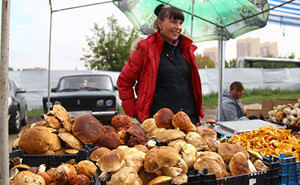 To prevent poisoning by toadstool, remember that it is dangerous to take unfamiliar mushrooms in the forest or buy them from private individuals. It is necessary to be guided by the golden rule of the mushroom picker: “If you don’t know, don’t take it,” “If you doubt it, don’t eat.”
To prevent poisoning by toadstool, remember that it is dangerous to take unfamiliar mushrooms in the forest or buy them from private individuals. It is necessary to be guided by the golden rule of the mushroom picker: “If you don’t know, don’t take it,” “If you doubt it, don’t eat.”
Remember the basic rules, knowledge of which may help save your life:
- most often, poisoning occurs when accidentally mixing toadstool with champignons;
- a characteristic feature of the disease is the manifestation of diarrhea and vomiting after a long period (more than 12 hours) after eating mushrooms;
- if one member of the group is poisoned, it is necessary to take measures to cleanse the stomach for everyone - induce vomiting, drink activated charcoal and immediately seek medical help.
With timely treatment, the prognosis for recovery is favorable, and the liver after poisoning is completely restored due to its unique regenerative properties.
Death cap(Amanita phalloides) is very poisonous, it is in fact the most dangerous and poisonous mushroom. None of them inflicts to the human body such destructive harm as . Eating it causes severe poisoning, treatment for which must be started as quickly as possible. But this dangerous mushroom itself, or rather its individual components, can help in the treatment of cancer.
Appearance
Photo of a pale grebe
Symptoms of poisoning
Help with poisoning
Reanimation
Mushroom picker tips
Research by German scientists
Appearance
The pale grebe can be found in coniferous and deciduous forests. It grows in groups, occasionally singly, throughout the summer and until the onset of frost.
The pale grebe is very poisonous. Mushroom contains deadly poisons: phallotoxins and aminotoxins. All parts of the mushroom are poisonous, including the spores. Even the juice remaining on the knife after cutting a mushroom is enough to poison a person.
So, what does it look like white grebe ? The pale grebe has white pulp and a pleasant mushroom aroma. Inexperienced mushroom pickers often confuse toadstool with ordinary edible champignons, russula, and honey mushrooms. In contrast, the pale grebe has a tuberous swelling on the lower part of the leg, and a ring in the form of a white “skirt” at the top. The venom of the toadstool cannot be neutralized by heat treatment.
Differences from green russula
Despite its external resemblance to edible mushrooms, it is quite simple to distinguish the pale toadstool from the same russula:- Russula does not have a tuberous thickening on the stem and a volva (membranous wrapper on the bottom of the stem).
- Top legs false mushroom a ring of film may be present.
- Russula has a smooth and straight leg.
If you pay attention to these facts, you can simply distinguish the pale toadstool from the russula.
The effect of poison on the human body
When hitting gastrointestinal tract Even a small particle of the fungus causes intoxication of the body. The liver and kidneys are mainly affected, where the poison concentrates.
Under the influence of poisons, liver cells die and liver failure develops, and kidney degeneration occurs. All human organs are gradually affected. If time is wasted and urgent measures are not taken, treatment may be useless. All medications will be powerless against intoxication.
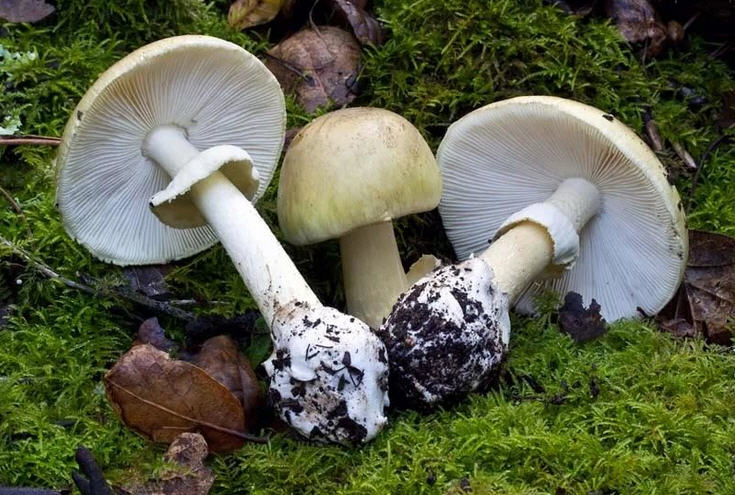
Children and the elderly suffer the most severe illness, with the greatest number of deaths among them.
Timely seeking medical help at the slightest suspicion of toadstool poisoning will reduce the likelihood of death by 50%.
Food poisoning
The mushroom is deadly poisonous, so food use excluded. Unlike a number of other poisonous mushrooms, neither drying nor heat treatment eliminates the toxic effects of toadstool poisons. For poisoning, it is enough for an adult to eat about 1/3 of the fruiting body of the mushroom (about 100 g). Children are especially sensitive to toadstool toxins, in whom symptoms of poisoning begin with clenching of the jaw and convulsions. The main symptoms of poisoning with toadstool appear after 6 hours - two days. Then other signs of toadstool poisoning appear: vomiting, muscle pain, intestinal colic, uncontrollable thirst, cholera-like diarrhea (often with blood). The pulse becomes weak, thread-like, blood pressure decreases, and, as a rule, loss of consciousness is observed. As a result of liver necrosis and acute cardiovascular failure, death occurs in most cases.
Symptoms and signs of poisoning
The first signs of poisoning may appear after 12-13 hours.
Typical symptoms:
Spasmodic pain in the abdomen;
nausea;
uncontrollable vomiting;
frequent loose stools with blood in the stool;
pale face, damp palms;
blurred vision;
prostration.
Help with poisoning
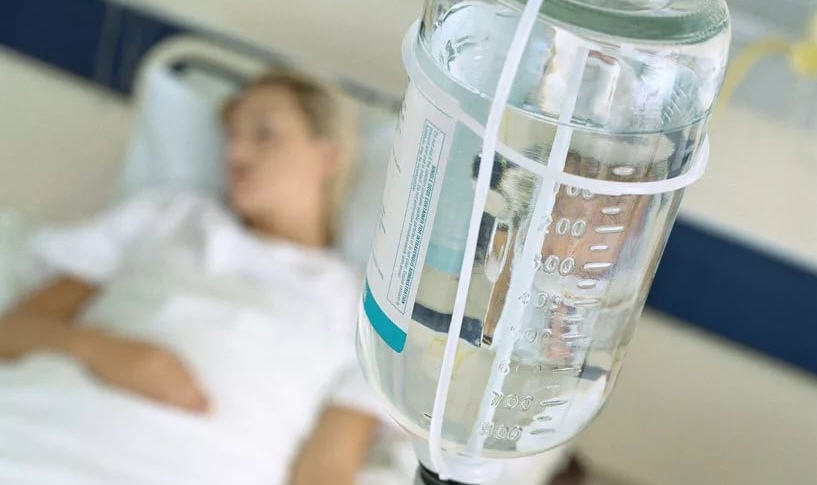
At the slightest sign of poisoning, you should immediately call an ambulance or take the victim to the hospital in some other way. Otherwise, treatment may be unsuccessful.
Before the ambulance arrives you should:
- Rinse the stomach, drink 5-6 glasses of warm boiled water.
- Induce vomiting. Repeat the procedure several times.
- Take a laxative. Castor oil can be used as a laxative.
- Give an enema. All this is done with the aim of cleansing the stomach and intestines of food containing poison.
- Lie in bed and apply warm heating pads to your limbs.
- Do not consume food or alcoholic beverages.
A person’s life depends on how quickly treatment is started.
Ambulance
At the slightest sign of mushroom poisoning, you need to urgently call an ambulance
Reanimation
There is only one recipe for treating a patient with toadstool poisoning - eliminating dehydration, detoxification and preventing death.
Treatment begins with the use of various plasma substitutes, which are administered in a volume of at least 3-5 liters per day using a dropper. In case of poisoning there is a fall blood pressure, measures are being taken to increase it. To do this, norepinephrine or mesaton is administered. Hydrocortisone or other medicinal analogues are used to support the liver. If there are signs of heart failure, strophanthin and corglycone are used.
Mushroom picker tips
- To avoid putting a toadstool in your basket instead of a champignon, carefully examine the underside of the cap. She shouldn't be white. The champignon plates immediately turn pink and then darken.
- Do not collect under any circumstances edible mushrooms, if a toadstool grows next to them.
- Cooking mushrooms is a responsible operation; it is better to throw away a suspicious specimen than to cook a poisonous soup for your family.
Pale grebe in folk medicine
Despite its deadly toxicity, this mushroom still has medicinal properties. IN folk medicine Toadstool is used to treat cancer. There is evidence that toadstool prevents the development of metastases. Literally microparticles of the mushroom are used. But under no circumstances should you self-medicate. This mushroom is deadly.
Research by German scientists
The medical effect of toadstool in the treatment of cancer is also confirmed by German scientists from the Cancer Research Center.
The pale grebe contains a deadly poison - amanitin. Scientists have discovered that amanitin can destroy cancer cells. Recognizing them, amanitin introduces its poison into the cancer cell. It suppresses the growth of cancer cells and leads to the disappearance of tumors. Medicinal properties amanitin were tested on experimental mice.
However, the poison kills both cancer cells and healthy ones. Together, German immunologists and biochemists developed a unique method that made it possible to treat cancer without harm to the entire body. The poison only destroys cancer cells.
The difficulty lay in targeted delivery of this toxin to cancer cells. It was necessary to find a substance that could be used as transport. Such a substance has been found. Antibodies have been isolated from the venom and attach to cancer cells using a protein encoded by the human EpCam gene.
Research by scientists
German scientists from the Cancer Research Center are conducting experiments with toadstool
Poisonous mushroom against cancer
IN laboratory conditions German scientists managed to stop the growth of cancer cells:
Mammary gland;
colon;
pancreas;
bile ducts.
One injection of antibodies is enough to suppress tumor growth in experimental mice. It has been established that the poison does not harm the liver and other organs of animals. Preparations based on toadstool suppress tumor growth in experimental mice. Treatment of other types of cancer, such as leukemia and lymphoma, using amanitin is a task for German scientists in the near future.
Death cap(lat. Amanita phalloides) - a mushroom from the genus Amanita (fly agarics), one of the most dangerous poisonous mushrooms.
Description
The fruiting body is capped, ovoid at a young age, completely covered with a film.
The cap is 5-15 cm, olive, greenish or grayish, hemispherical to flat in shape, with a smooth edge and fibrous surface.
The pulp is white, fleshy, does not change color when damaged, with a mild taste and smell.
Leg 8-16 × 1-2.5 cm, cylindrical, with a thickening at the base. The color is like that of a cap or whitish, often covered with a moire pattern.
The plates are white, soft, loose.
Remains of bedspreads. The ring is initially wide, fringed, striped on the outside, and often disappears with age. The volva is well defined, free, lobed, white, 3-5 cm wide, often half immersed in the soil. There are usually no remains of the coverlet on the skin of the cap; sometimes there may be dense filmy fragments.
Spore powder is white, spores are 8.5 × 7 µm, almost round, amyloid.
VariabilityThe color of the cap ranges from almost white to grayish-green. Old mushrooms with an unpleasant sweetish odor; the cap becomes more grayish with age.
Related species
-
Amanita virosa(fly agaric or white toadstool)
-
Amanita verna(spring fly agaric)
| Left: Death cap. | |
|
Danger |
There are known cases of mistakenly collecting pale toadstools when cutting mushrooms with a knife right under the cap, when the characteristic membranous ring remained along with the stem on the ground.
Ecology and distribution
It forms mycorrhiza with various deciduous species (oak, beech, hazel), prefers fertile soils, light deciduous and mixed forests. Fruits singly or in groups and is common. The mushroom is widespread in the temperate zone of Europe, Asia and North America.
Season: late summer - autumn.
Picture of poisoning
Poisoning occurs when the toadstool is mistakenly consumed as food.
Heat treatment does not eliminate the toxic effect. 1/4 of the average fruit body (about 30 g) causes severe poisoning, in children usually ending in death.
Main symptoms: after ¼-2 days, uncontrollable vomiting, intestinal colic, muscle pain, unquenchable thirst, cholera-like diarrhea (often with blood) appears. Jaundice and liver enlargement may occur. Pulse - weak, thread-like. Blood pressure is reduced, loss of consciousness is observed. As a result of toxic hepatitis and acute cardiovascular failure, in most cases it is fatal.
The particular danger of the fungus is that signs of poisoning do not appear for a long time. Symptoms may not appear during the first 6-24 or more hours, during which, however, the body is already poisoned and irreparable damage is caused to it. Once symptoms appear, the mortality rate is very high and any treatment is often futile.
Interesting Facts
The Roman Emperor Claudius was poisoned with toadstool. Claudius's wife, Agrippina, added toadstool to a dish of Caesar's mushrooms. Claudius died, and Nero became the new emperor.

